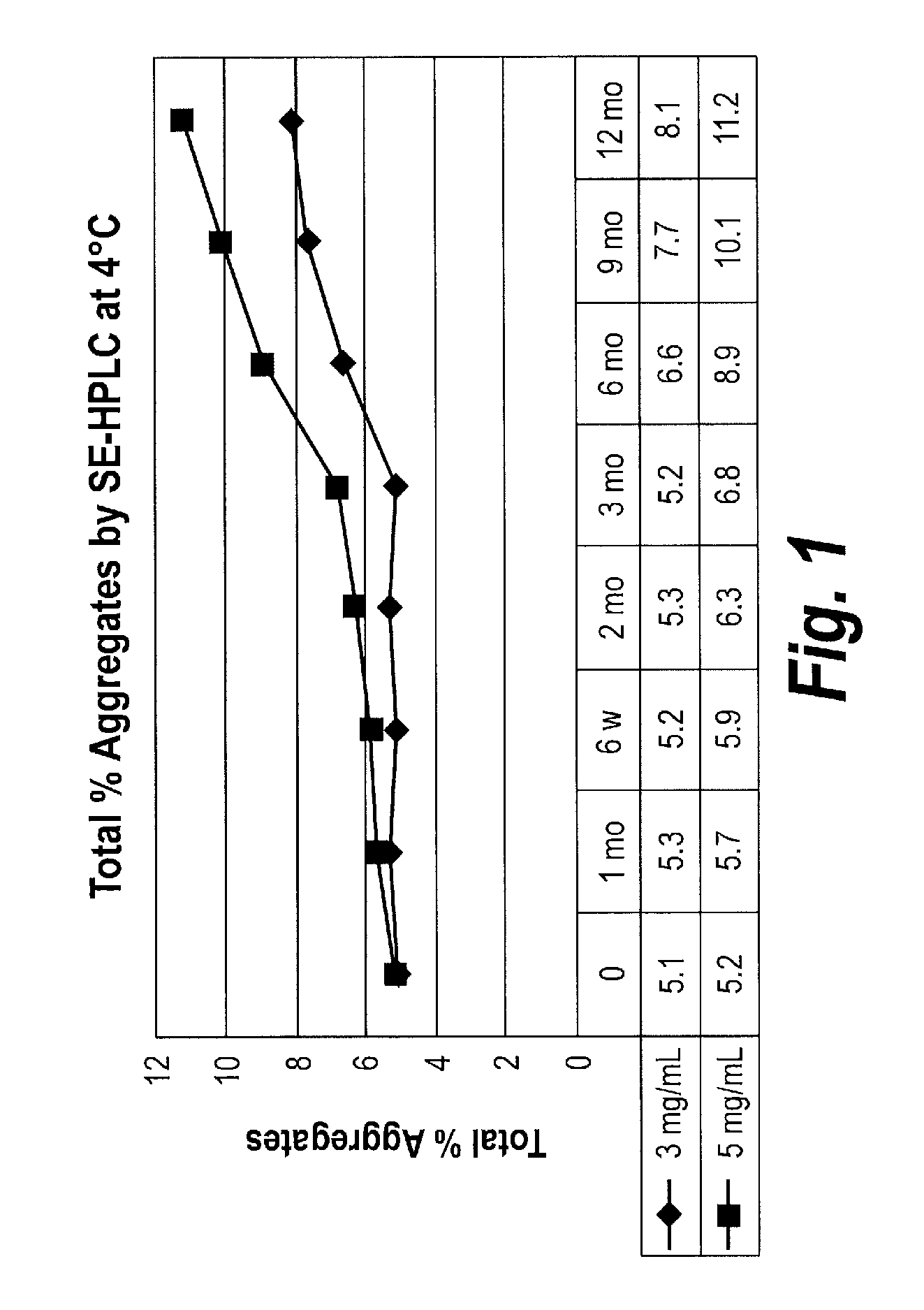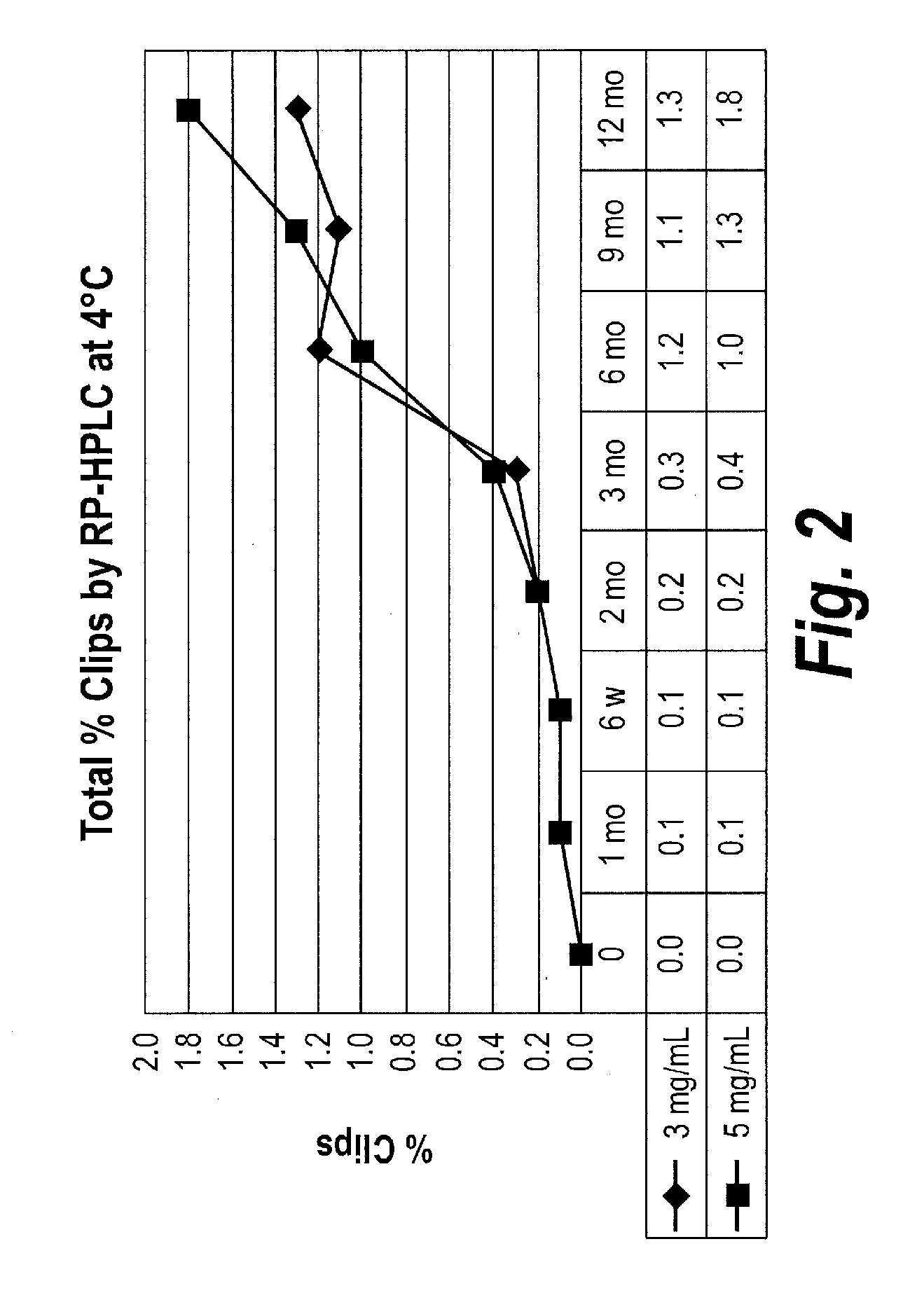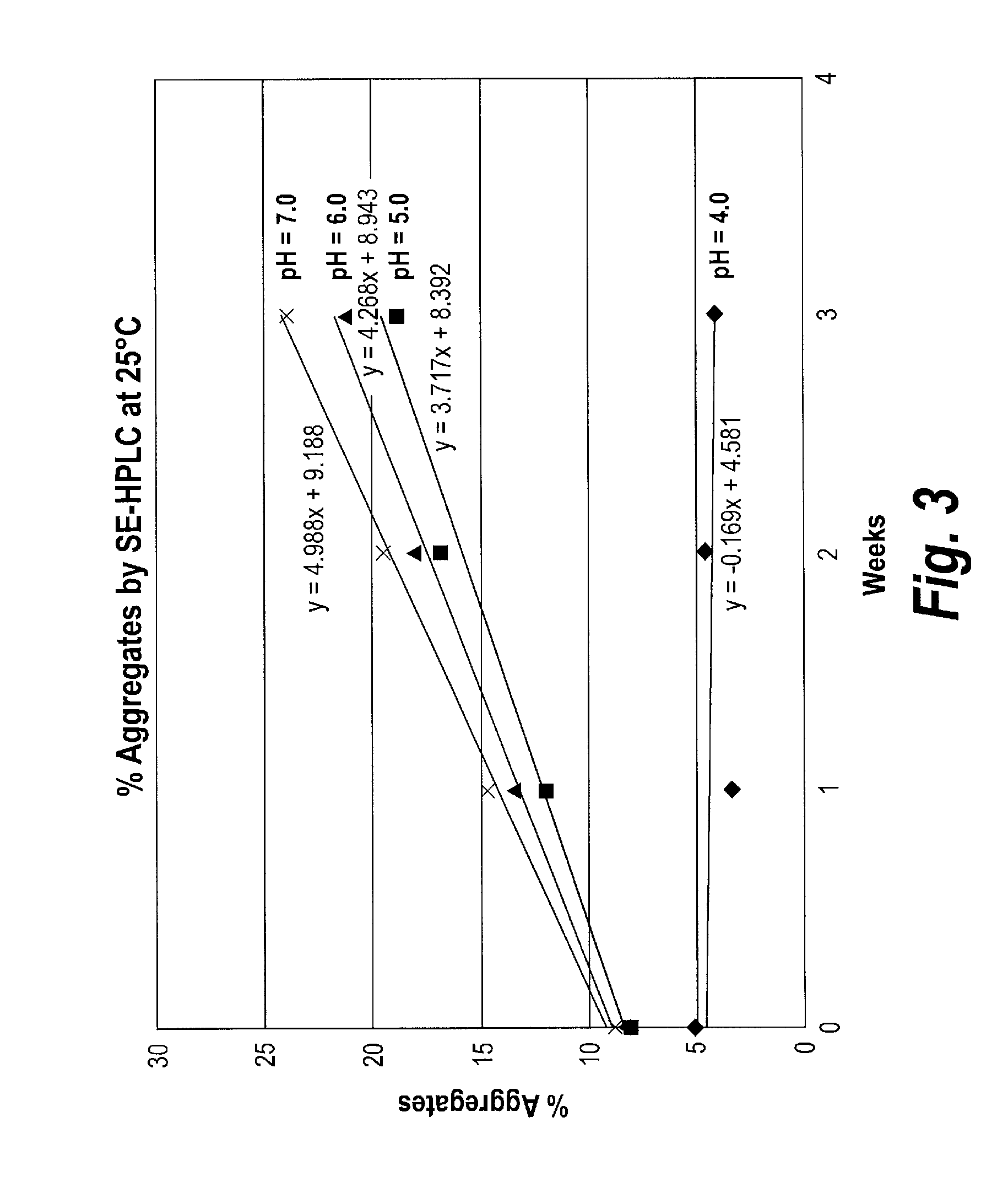Fibronectin based scaffold proteins having improved stability
a scaffold protein and fibronectin technology, applied in the direction of peptide/protein ingredients, depsipeptides, fusion polypeptides, etc., can solve the problems of reducing the efficacy of protein therapeutics, affecting biological properties, physical and chemical instability of protein pharmaceuticals, etc., to reduce fragmentation, reduce aggregation, and increase stability
- Summary
- Abstract
- Description
- Claims
- Application Information
AI Technical Summary
Benefits of technology
Problems solved by technology
Method used
Image
Examples
example 1
Fibronectin Based Scaffold Proteins
[0177]Various fibronectin based scaffold proteins were generated, including VEGFR2 / IGF-IR binders (“V / I binders”) and EGFR / IGF-IR binders (“E / I binders”). The following table depicts constructs described herein and their corresponding SEQ ID NOs.
[0178]
TABLE 1Overview of various V / I and E / I binders.ConstructDescriptionSEQ ID NO:AbbreviationDK+ IGF-IR / A bivalent V / I construct22V / I(DK+)VEGFR2 Binderwith a C1 tail consistingwith EIDKPCQof SEQ ID NO: 46 and aTail (SEQ IDC2 tail consisting ofNO: 47)SEQ ID NO: 47DK+ EGFR / A bivalent E / I construct23E / I(DK+)IGF-IR Binderwith a C1 tail consistingwith EIDKPCQof SEQ ID NO: 46 and aTail (SEQ IDC2 tail consisting ofNO: 47)SEQ ID NO: 47DK− EGFR / A bivalent E / I construct24E / I(DK−,IGF-IR Binderwith a C1 tail consistingno C-term)with EGSGCof SEQ ID NO: 4 and aTail (SEQ IDC2 tail consisting ofNO: 5)SEQ ID NO: 5DK− EGFR / A bivalent E / I construct25E / I(2DK−)IGF-IR Binderwith a C1 tail consistingwith EIEKPCQof SEQ ID NO: 4 ...
example 2
Expression and Purification of Fibronectin Based Scaffold Proteins
Expression of E / I Molecules
[0183]E / I bivalent constructs are expressed in E. coli cells in soluble form. The inclusion bodies are recovered by cell disruption and centrifugation. The E / I proteins are filtered and captured using column chromatography. The purified protein is then covalently linked to a PEG via maleimide chemistry at a single cysteine residue. The PEGylated product is then polished using column chromatography and formulated using tangential flow filtration.
Expression of V / I Molecules
[0184]For expression of V / I bivalent constructs, a nucleotide sequence encoding the construct is cloned into an inducible expression vector and is expressed into intracellular inclusion bodies in E. coli cells. Cell bank vials generated from a culture of a single plated colony are used to inoculate a shake flask culture as an inoculum for a large-scale fermentor. Alternatively, a seed fermentor is used for an inoculum cultur...
example 3
Effects of Protein Concentration on V / I Protein Stability
[0187]The effects of protein concentration on physical (aggregation) and chemical (fragmentation) stability of purified V / I(DK+) (SEQ ID NO: 22) were examined. V / I(DK+) protein was formulated in 10 mM succinic acid, 5% sorbitol at pH 5.5. V / I protein concentration was either at 3 mg / mL or at 5 mg / ml. Samples were stored at 4° C. for a period of 12 months, with samples being collected and analyzed at 1 month, 6 weeks, 2 months, 3 months, 6 months, 9 months and 12 months.
[0188]The amount of aggregation is measured by assessing the percentage of total protein that has formed aggregates (measured as High Molecular Weight (“HMW”) species) over time. Aggregation was determined using Size Exclusion-High Performance Liquid Chromatography (SE-HPLC) analysis to assess the levels of HMW over time. SE-HPLC analysis was conducted using a Superdex 200 10 / 300 GL column, with a mobile phase of 0.2M potassium phosphate, 0.15 M sodium chloride,...
PUM
| Property | Measurement | Unit |
|---|---|---|
| concentration | aaaaa | aaaaa |
| pH | aaaaa | aaaaa |
| pH | aaaaa | aaaaa |
Abstract
Description
Claims
Application Information
 Login to View More
Login to View More - R&D
- Intellectual Property
- Life Sciences
- Materials
- Tech Scout
- Unparalleled Data Quality
- Higher Quality Content
- 60% Fewer Hallucinations
Browse by: Latest US Patents, China's latest patents, Technical Efficacy Thesaurus, Application Domain, Technology Topic, Popular Technical Reports.
© 2025 PatSnap. All rights reserved.Legal|Privacy policy|Modern Slavery Act Transparency Statement|Sitemap|About US| Contact US: help@patsnap.com



